In the 1930's thousands of acres of land were rendered unproductive through wind erosion because of drought, tillage, and dust mulch farming practices. Charles S. Noble, of Nobleford, Alberta, invented a cultivator that sheared stubble and weeds below the ground surface, leaving residue on the soil to reduce evaporation and prevent erosion by strong Alberta winds. The Noble Blade Cultivator was patented in 1937. The Noble family subsequently developed a variety of straight and V-blade cultivators.
Canada
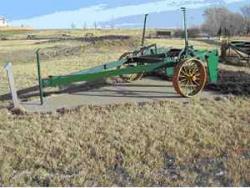
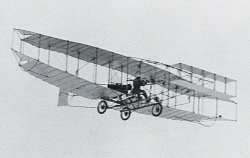
AIAA designated Baddeck, Nova Scotia as a historic site, providing a plaque to commemorate the centennial of the first powered flight in Canada. On February 23, 1909, piloting the “Silver Dart,” J.A. Douglas McCurdy took off from the frozen surface of Bras d’Or Lake at Baddeck Bay, and flew for close to one kilometer before landing safely on ice. The plane had been created by Mabel and Alexander Graham Bell’s Aerial Experiment Association, formed in 1907 to build and fly experimental aircraft.

On 16 December 1953, the first television broadcast in Western Canada was transmitted from this site by the Canadian Broadcasting Corporation's CBUT Channel 2. The engineering experience gained here was instrumental in the subsequent establishment of the more than one thousand public and private television broadcasting sites that serve Western Canada today.

On the morning of 17 April 1967, radio astronomers used this radiotelescope at DRAO and a second one at the Algonquin Radio Observatory located 3074 km away to make the first successful radio astronomical observations using Very Long Baseline Interferometry. Today, VLBI networks span the globe, extend into space and continue to make significant contributions to both radio astronomy and geodesy.
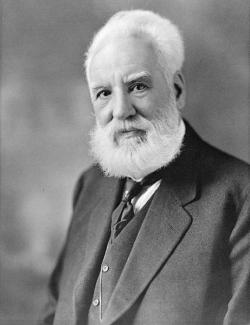
On 10 August 1876, Alexander Graham Bell demonstrated on this site that the human voice could be transmitted electrically over distance. While family members spoke into a transmitter in Brantford, 13 km away, Bell was able to hear them at a receiver located in Paris. This test convinced Bell that his invention could be used for communication between towns and could compete successfully with the telegraph.
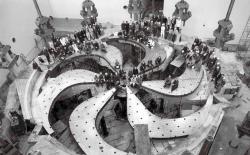
At 3:30 pm on 15 December 1974, the first 500 MeV proton beam was extracted from the TRIUMF cyclotron. Since then, TRIUMF has used proton beams from its cyclotron (and secondary beams of pions, muons, neutrons and radioactive ions produced in its experimental halls) to conduct pioneering studies that have advanced nuclear physics, particle physics, molecular and materials science, and nuclear medicine.
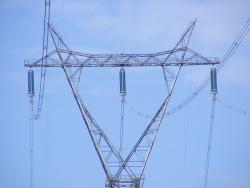
Hydro-Quebec's 735,000 volt electric power transmission system was the first in the world to be designed, built and operated at an alternating-current voltage above 700 kV. This development extended the limits of long-distance transmission of electrical energy. On 29 November 1965 the first 735 kV line was inaugurated. Power was transmitted from the Manicouagan-Outardes hydro-electric generating complex to Montreal, a distance of 600 km.
Operating since 1972, Eel River, New Brunswick is home to the world's first commercial solid state High Voltage Direct Current converter station. This 320 MW interconnection facility, built by Canadian General Electric and NB Power, incorporates high current silicon solid state thyristors to convert alternating current from Hydro Quebec to direct current and back to alternating, allowing asynchronous, stable power transfers to serve New Brunswick's Power's customers.
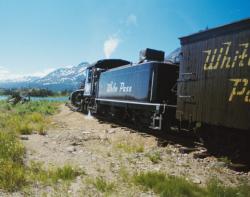
Combining British financing, American engineering, and Canadian contracting, the White Pass and Yukon was the first major civil engineering project on the continent above the 60th degree of northern latitude. Completed in 27 months using only hand tools, black powder, and regional timber, the White Pass and Yukon rises almost 2,900 feet from sea level at the port of Skagway to the White Pass summit on the U.S.-Canada border in just 20 miles, accomplishing one of the steepest climbs of any railroad in the world.
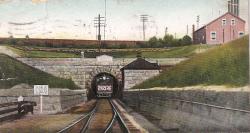
A Day's Pay According to tunnel records, the following pay rates were established for the 600-700 laborers required for this project:
Innovations

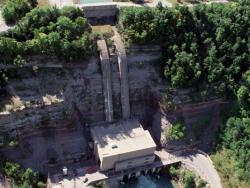
The Decew Falls Hydro-Electric Development was a pioneering project in the generation and transmission of electrical energy at higher voltages and at greater distances in Canada. On 25 August 1898 this station transmitted power at 22,500 Volts, 66 2/3 Hz, two-phase, a distance of 56 km to…
Read More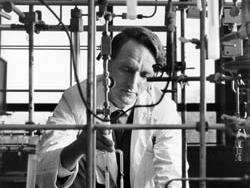
In 1962 Neil Bartlett demonstrated the first reaction of a noble gas. The noble gas family of elements - helium, neon, argon, krypton, xenon, and radon - had previously been regarded as inert. By combining xenon with a platinum fluoride, Bartlett created the first noble gas compound. This…
Read More
Opened July 9, 1904, this lift lock is the highest of its type in the world, transferring boats between two water levels in a single 19.8 m (65 ft.) lift. Designed in place of conventional locks, which would have lengthed the time considerably to transverse a gradual drop, this lift lock was a…
Read More
The bridge is immense, not only in length and weight but in width. At 67 feet wide, it can accommodate two sets of railway tracks, two sets of streetcar tracks and two roadways.
It took three tries and cost 89 lives, but the city of Quebec was determined to compete with provincial rival…
Read More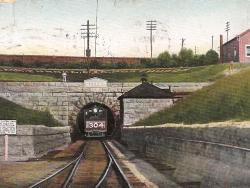
A Day's Pay According to tunnel records, the following pay rates were established for the 600-700 laborers required for this project:
- 17.5 cents per hour for diggers
- 15 cents per hour for erectors
- 12.5 cents per hour for others
- One additional…
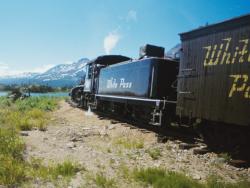
Combining British financing, American engineering, and Canadian contracting, the White Pass and Yukon was the first major civil engineering project on the continent above the 60th degree of northern latitude. Completed in 27 months using only hand tools, black powder, and regional timber, the…
Read MoreOperating since 1972, Eel River, New Brunswick is home to the world's first commercial solid state High Voltage Direct Current converter station. This 320 MW interconnection facility, built by Canadian General Electric and NB Power, incorporates high current silicon solid state thyristors to…
Read More
Hydro-Quebec's 735,000 volt electric power transmission system was the first in the world to be designed, built and operated at an alternating-current voltage above 700 kV. This development extended the limits of long-distance transmission of electrical energy. On 29 November 1965 the first 735…
Read More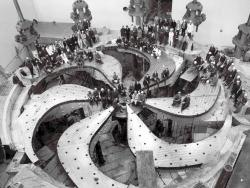
At 3:30 pm on 15 December 1974, the first 500 MeV proton beam was extracted from the TRIUMF cyclotron. Since then, TRIUMF has used proton beams from its cyclotron (and secondary beams of pions, muons, neutrons and radioactive ions produced in its experimental halls) to conduct pioneering studies…
Read More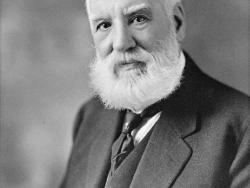
On 10 August 1876, Alexander Graham Bell demonstrated on this site that the human voice could be transmitted electrically over distance. While family members spoke into a transmitter in Brantford, 13 km away, Bell was able to hear them at a receiver located in Paris. This test convinced Bell…
Read More
On the morning of 17 April 1967, radio astronomers used this radiotelescope at DRAO and a second one at the Algonquin Radio Observatory located 3074 km away to make the first successful radio astronomical observations using Very Long Baseline Interferometry. Today, VLBI networks span the globe,…
Read More
On 16 December 1953, the first television broadcast in Western Canada was transmitted from this site by the Canadian Broadcasting Corporation's CBUT Channel 2. The engineering experience gained here was instrumental in the subsequent establishment of the more than one thousand public and…
Read More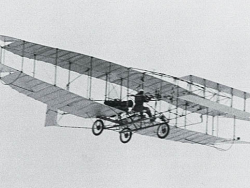
AIAA designated Baddeck, Nova Scotia as a historic site, providing a plaque to commemorate the centennial of the first powered flight in Canada. On February 23, 1909, piloting the “Silver Dart,” J.A. Douglas McCurdy took off from the frozen surface of Bras d’Or Lake at Baddeck Bay, and flew for…
Read More
In the 1930's thousands of acres of land were rendered unproductive through wind erosion because of drought, tillage, and dust mulch farming practices. Charles S. Noble, of Nobleford, Alberta, invented a cultivator that sheared stubble and weeds below the ground surface, leaving residue on…
Read More

